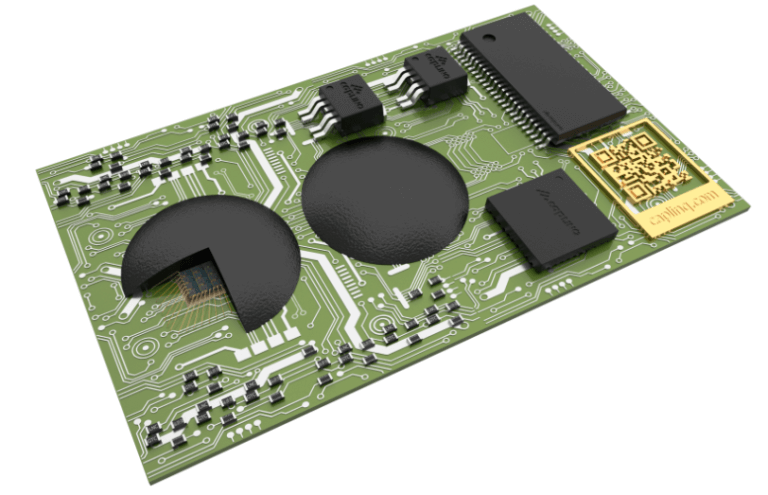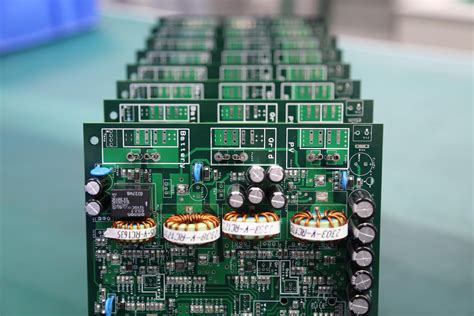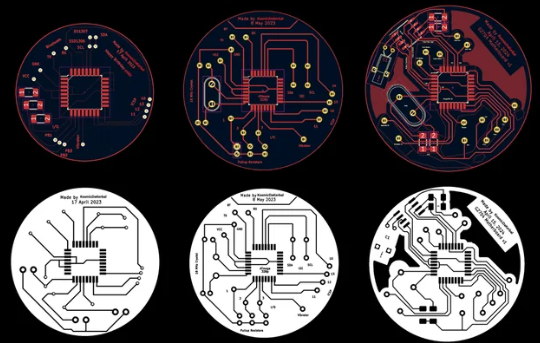Understanding PCB Assembly Costs for Each Component
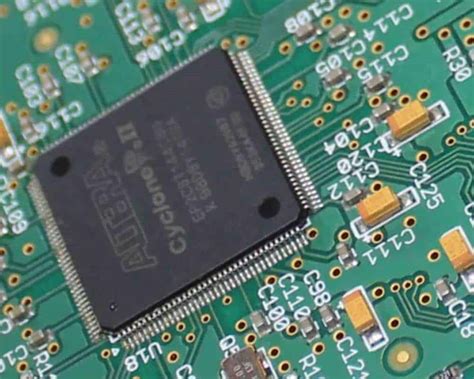
Key Takeaways
Understanding PCB assembly costs is crucial for anyone involved in electronics manufacturing, as expenses can vary significantly based on a multitude of factors. A fundamental takeaway is that each component, from resistors to microcontrollers, contributes differently to the overall PCBA (Printed Circuit Board Assembly) cost. For instance, higher complexity components typically raise the total cost due to both the materials and the assembly processes required.
It’s essential to consider additional aspects such as the volume of production and the specifics of surface mount technology versus through-hole technology. Larger production runs can reduce costs per component due to economies of scale. Utilizing a table for clarity, one could illustrate how varying quantities impact PCB assembly expenses:
| Component Type | Cost per Unit (Small Batch) | Cost per Unit (Large Batch) |
|---|---|---|
| Resistor | $0.05 | $0.02 |
| Capacitor | $0.10 | $0.05 |
| Microcontroller | $3.00 | $2.50 |
Another important point is that logistics and assembly complexity affect overall pricing too—efficient supply chains and streamlined processes often lead to reduced costs while maintaining quality standards. As you delve into pricing structures, it’s also key to differentiate between essential components versus optional add-ons that enhance functionality but inflate budgets unnecessarily.
In summary, a thorough analysis of each component’s role and its cost implications enables manufacturers to adopt strategies that optimize their PCBA budgets while ensuring performance standards are met or exceeded. Prioritizing quality in tandem with cost considerations will ultimately lead to more effective electronic designs and products in the marketplace.
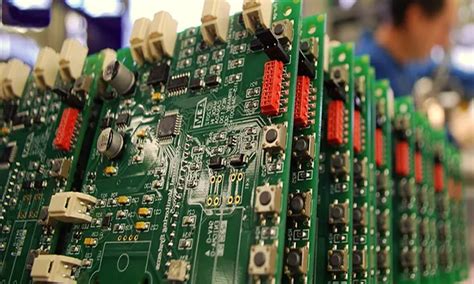
Introduction to PCB Assembly Cost Breakdown
Understanding the intricacies of PCB assembly costs is essential for anyone involved in electronics manufacturing. The expenses associated with PCBA (Printed Circuit Board Assembly) can vary significantly based on several factors, including the complexity of the design, the components used, and the scale of production. Each component of a PCB contributes to the overall assembly cost, highlighting the importance of breaking down these costs for more effective budgeting. For example, specialized components such as microcontrollers or high-frequency connectors can often drive up costs due to their advanced functionalities and manufacturing processes. Additionally, sourcing materials from different suppliers may lead to varying prices that impact total expenses. It’s also crucial to consider labor costs and equipment required for assembly, which can further add to the financial commitment. By dissecting these elements, manufacturers can gain valuable insights into where savings might be realized without sacrificing quality, ultimately leading to a more structured approach in managing PCB assembly budgets. This understanding not only aids in financial planning but also fosters more informed decisions regarding component selection and supplier negotiations.
Key Factors Influencing Component Costs
When analyzing PCB assembly costs, it’s essential to understand the various factors that impact the price of each individual component. The complexity of the circuit design plays a significant role; intricate designs often require more advanced manufacturing techniques, which can drive up costs. Additionally, the type of materials used, such as high-quality substrates or specialized electronic components, can also increase expenses. Volume is another critical factor; producing a larger quantity of PCBA units typically reduces the cost per component due to economies of scale.
Furthermore, sourcing reliability affects component prices—supply chain disruptions or demand fluctuations may lead to sudden price increases. It is advisable for manufacturers to consider a diversified supplier base to mitigate these risks and promote competitive pricing.
“Optimize your procurement strategy by assessing multiple suppliers and leveraging bulk purchase agreements to secure better pricing on components.”
Lastly, technological advancements can alter cost structures as newer production methods may reduce labor costs or minimize material wastage. By keeping abreast of industry trends and focusing on agility within the supply chain, businesses can enhance their ability to navigate the PCB assembly landscape effectively while maintaining quality and performance standards in their products.
Comparative Analysis of Component Prices
Understanding the pcb assembly landscape requires a deep dive into the comparative analysis of component prices, which serves as a critical aspect in determining overall costs. Various components differ significantly not only in function but also in their price points. For instance, passive components such as resistors and capacitors are generally less expensive than active components like microcontrollers or specialized ICs. This disparity can be attributed to several factors, including materials used, manufacturing processes, and availability. Additionally, bulk purchasing can lead to reduced costs per unit for specific components. As companies analyze their pcba needs, they must consider both the initial purchase price and potential long-term costs, such as failure rates and replacement frequency. Understanding these nuances allows for a more accurate projection of assembly expenses and helps identify areas where budget optimization is feasible without sacrificing quality. This strategic approach not only encourages informed decision-making but also enhances the potential for successful project outcomes within competitive markets.
Strategies to Optimize PCB Assembly Budgets
When managing PCB assembly costs, implementing effective strategies becomes crucial to maintaining a sustainable budget while ensuring high-quality output. One method is to conduct thorough research on component suppliers and utilize competitive pricing to your advantage. By obtaining multiple quotes, you can better gauge the market rates and identify potential savings. Additionally, considering the use of standard or off-the-shelf components can significantly reduce costs, as custom parts often come with higher price tags due to their specialized manufacturing processes.
Another key strategy is to streamline the design process by optimizing the PCB layout; simpler designs with fewer layers tend to be less expensive both in terms of component procurement and assembly labor. Furthermore, employing design for manufacturability (DFM) principles will help anticipate assembly issues early in the process, ultimately preventing costly revisions down the line.
Lastly, establishing a strong relationship with your PCB assembly (PCBA) partner can lead to better pricing negotiations and improved production timelines. When collaborating closely with your manufacturer, you may find opportunities for batch ordering discounts or reduced lead times for recurrent components. By implementing these strategies thoughtfully, you can effectively manage PCB assembly costs without sacrificing quality or performance.
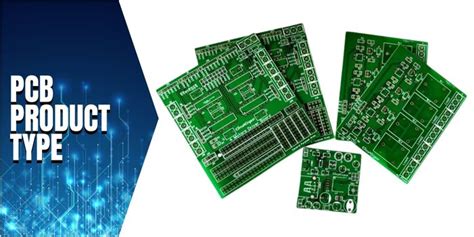
The Role of Quality in Cost Assessment
When evaluating PCB assembly costs, the impact of quality cannot be overstated. High-quality components often come with a higher upfront cost, but the long-term benefits can outweigh these initial expenditures. Poor-quality components can lead to increased failure rates, resulting in higher costs associated with repairs, replacements, and potential downtime. Therefore, it is crucial to consider not just the price tag of each part but also its reliability and performance. Investing in superior PCBA materials and manufacturing processes may enhance durability and reduce the overall cost per component in the long run. Additionally, adhering to stringent quality standards can minimize defects during assembly, which contributes to a smoother production cycle and lowers overall expenses. As we navigate through PCB assembly, balancing cost with quality ultimately leads to better product outcomes and can improve profitability over time. Careful evaluation of each component’s attributes aids in making informed decisions that align budget considerations with performance expectations.
Common Misconceptions About PCB Assembly Costs
When exploring PCB assembly costs, several misconceptions often cloud the understanding of PCBA pricing. One pervasive myth is that PCB assembly expenses are solely determined by the number of components. While it’s true that more components generally lead to higher costs, this view oversimplifies the intricacies of manufacturing processes, labor costs, and the specific materials used. Another common misconception is that all components carry a similar cost regardless of their type or complexity. In reality, certain components, such as specialized microcontrollers or high-frequency transformers, may require additional resources for testing and placement, significantly affecting their PCBA price. Furthermore, many assume that opting for cheaper components automatically results in lower overall assembly costs; however, this approach can lead to increased production issues or lower reliability, which ultimately raises long-term expenses. It’s essential to recognize these factors and approach PCB assembly cost analysis with a comprehensive perspective to ensure a more accurate budget representation.
Future Trends in PCB Component Pricing
As the technology landscape continues to evolve, the pcb assembly industry faces significant changes in component pricing. The demand for more advanced functionalities and increased miniaturization of electronic devices is driving manufacturers to innovate, which can lead to fluctuating costs for various components. Additionally, global supply chain dynamics, including sourcing issues and geopolitical factors, are impacting the availability and pricing of essential materials, such as semiconductors. These shifts are compelling manufacturers to reassess their pcba strategies, focusing on smarter sourcing and inventory management practices. Moreover, as sustainability becomes a critical concern across industries, there is a growing trend toward using eco-friendly materials that could influence component costs. Adopting automation in pcb assembly processes also shows promise in reducing labor costs and enhancing production efficiency, potentially stabilizing overall pricing. By staying informed about these trends and understanding their implications, businesses can better navigate the complexities of pcb assembly costs while ensuring they maintain a quality product that meets market demands.
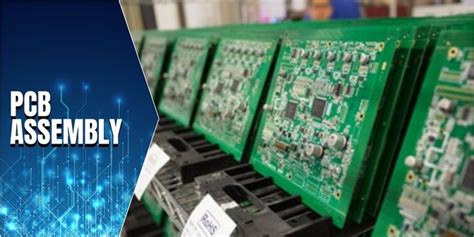
Conclusion
In conclusion, understanding PCB assembly costs is essential for anyone involved in the electronics manufacturing sector. Each component in a Printed Circuit Board Assembly (PCBA) contributes to the overall expense, and recognizing the factors that influence these prices can lead to more informed budgeting decisions. From the choice of materials to the complexity of assembly processes, every aspect plays a significant role in determining cost. Moreover, misconceptions about the pricing structure can lead to unexpected overages. By adopting effective strategies for optimizing budgets while ensuring quality remains uncompromised, organizations can navigate the PCB assembly landscape more effectively. Future trends indicate that as technology evolves, so too will component pricing; staying abreast of these changes will be crucial for maintaining competitive advantage in the industry.
FAQs
What factors affect the cost of PCB assembly?
The cost of PCB assembly is influenced by various factors, including the complexity of the design, the number of components, and the technological requirements For each component. Additionally, materials used and production volume can significantly impact costs.
How can I estimate the PCBA cost per component?
To estimate the PCBA cost per component, start by calculating the total expenses for assembly, including labor, materials, and overhead. Divide this total by the number of components used in your project to get an average per-component cost.
Does a higher quantity of components reduce the cost per unit?
Yes, typically a higher quantity can lead to economies of scale. As production increases, certain fixed costs are spread over a larger number of units, resulting in a lower cost per unit for PCB assembly.
Are there any ways to save on PCB assembly costs without sacrificing quality?
Absolutely! Consider optimizing your design for manufacturing and assembly (DFMA) to reduce complexity. Additionally, sourcing components from reputable yet affordable suppliers can help keep costs down while maintaining quality.
Is it more economical to use standard components instead of custom ones?
Generally speaking, using standard components is more economical because they are more readily available and cheaper than custom parts. Custom parts often involve additional design costs and longer lead times.


